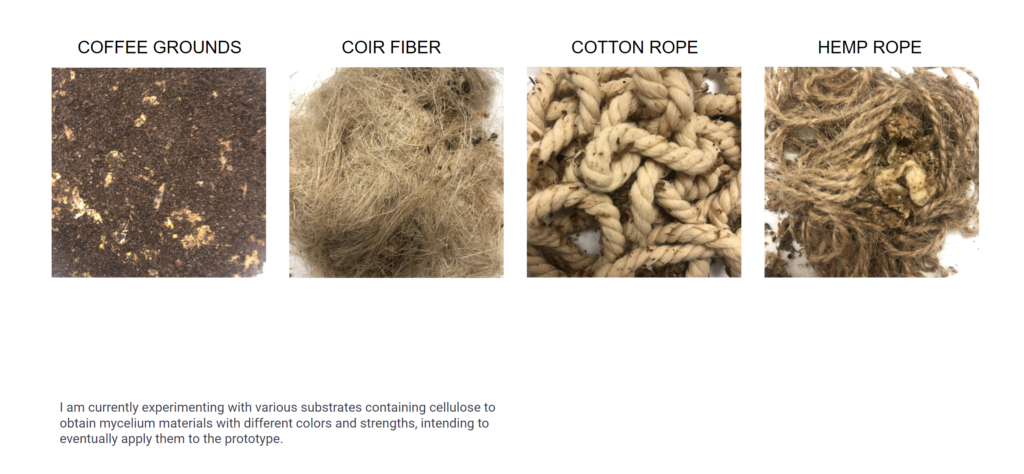AREA OF STUDY
Almost 40% of global carbon emissions can be attributed to the building sector, making the built environment both a liability and an opportunity to slow down climate change. International organizations and many countries have set the goal of net zero emissions for all industries by 2050 to avoid irreparable damage to our planet’s climate and ecosystems. The question is whether and how society can meet this target. As an architect, I choose to working on material research for my thesis in order to address this issue.
Mycelium as biomaterial has received extensive attentions, and has developed research in various range of fields. To bring mycelium into building industry are neither new topic, nor total developed.
Mycelium materials usually use waste organic matter as raw materials, reducing reliance on natural limited energy. They can also be decomposed and recycled, and can be sourced locally which reduces the environmental impact of manufacturing and transportation of building materials; It is lighter than traditional building materials, which helps reduce the weight of the building and reduces the structural load of the building; It has good thermal insulation properties, helping to save energy and maintain a comfortable indoor temperature, while also fire-resistant and waterproof.
STATE OF THE ART
‘The Growing Pavilion’ was built with naturally forming fungi (self-assembling). It was a temporary structure erected to host multiple events at Dutch Design Week in 2019.
The components used to build this structure are: mycelium, timber & bio-based coating originally developed by the Inca people around 12th century. The frame was built first using timber, then the mycelium panels were fitted into the timber frame. Panel fitting was done in such a way that it could be removed & re-used for other purposes.
CONCEPT
my option is that using mycelium material as a structure to fill in different types of wall. Let it grow orderly inside the walls. This material will eventually be used to develop an entire building.
WALL STRUCTURE ANALYSIS
OUTSIDE WALL: pure clay
INSIDE STRUCTURE: mycelium composite material
This wall structure comprises an internal support structure made of mycelium composite material and an external mold made of regular wall materials, providing controllability to the entire building. The mycelium material iteratively grows from the bottom to the top, gradually filling and reinforcing the entire wall, allowing flexibility in achieving any stable form.
PERSPECTIVE : SECTION :
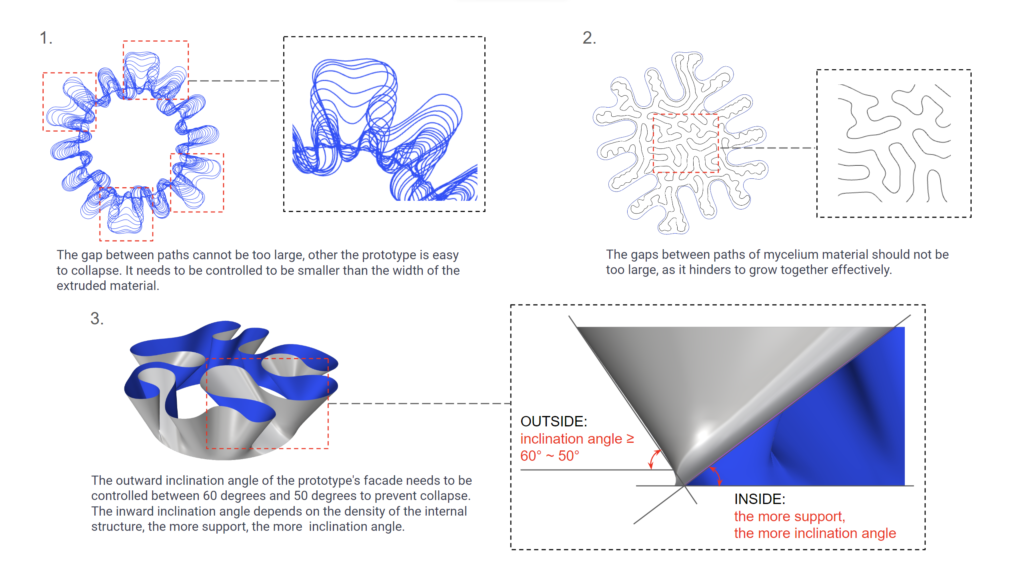
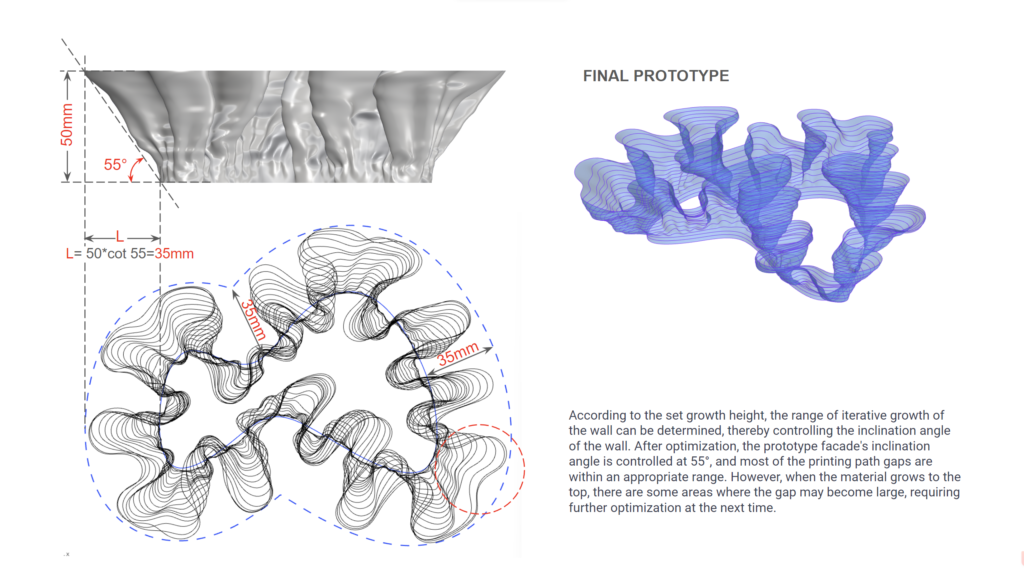
TECHNOLOGY RESEARCH
In terms of technology, molds are currently mainly used to control growth. In order to make better use of mycelium materials, certain research has been conducted on 3D printing technology, but the technology is not perfect yet and there are many areas that need improvement.
3D PRINTING
MIXTURE PROPORTION
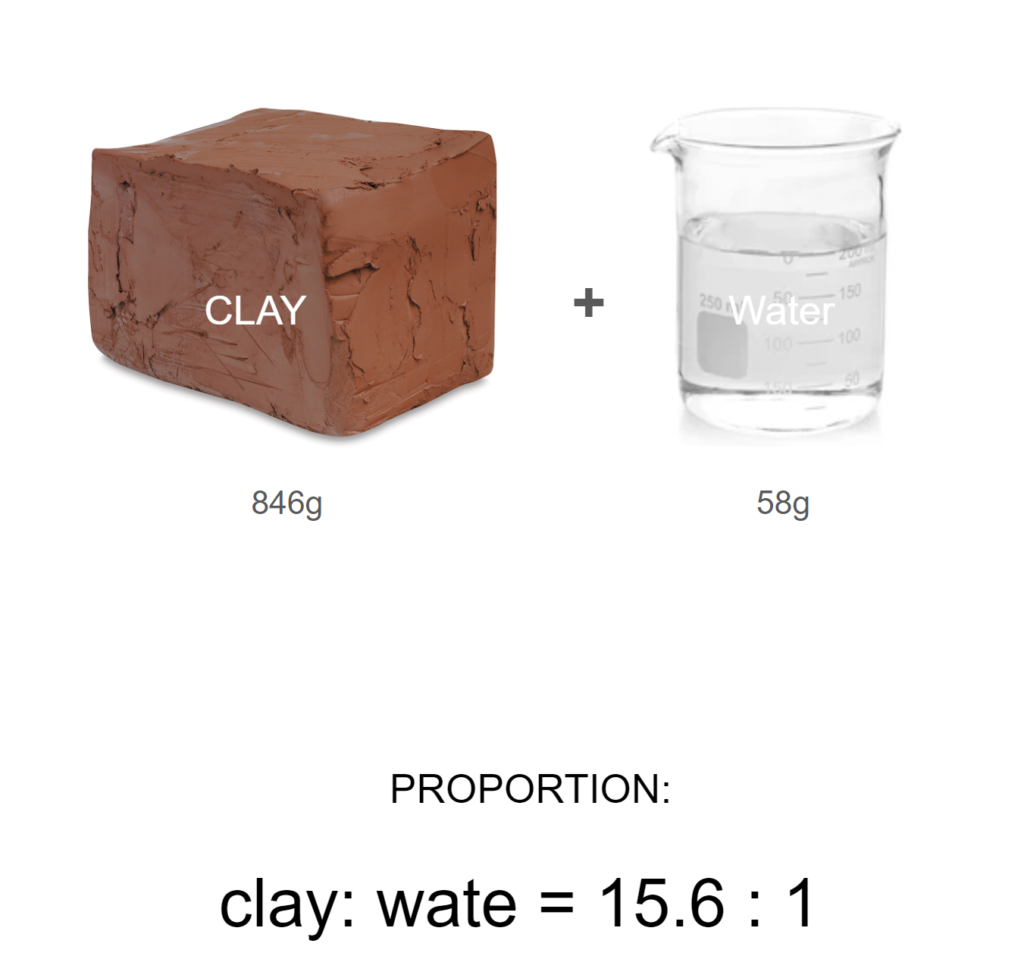
SPEED TESTING – pure clay
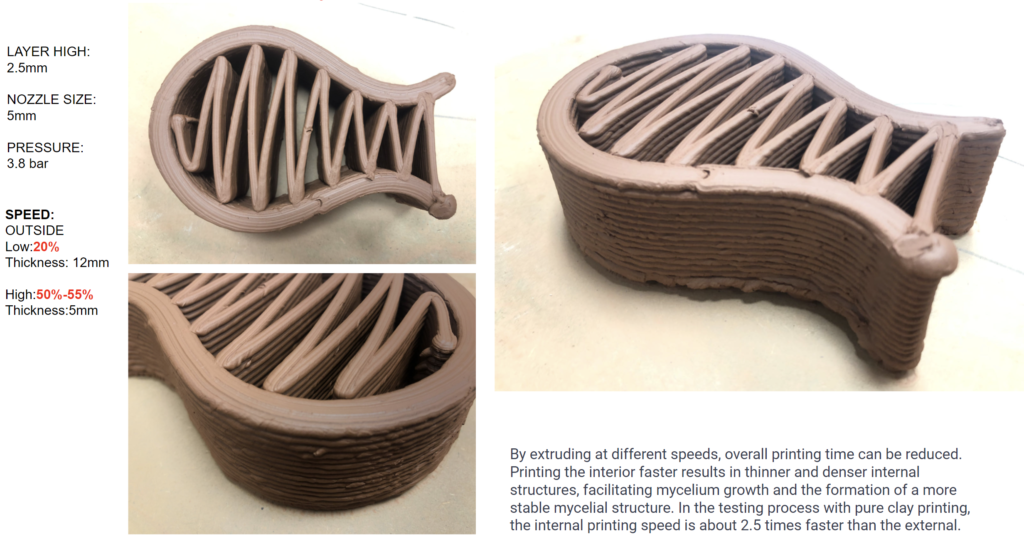
MIXTURE PROPORTION

MIXTURE PROPORTION
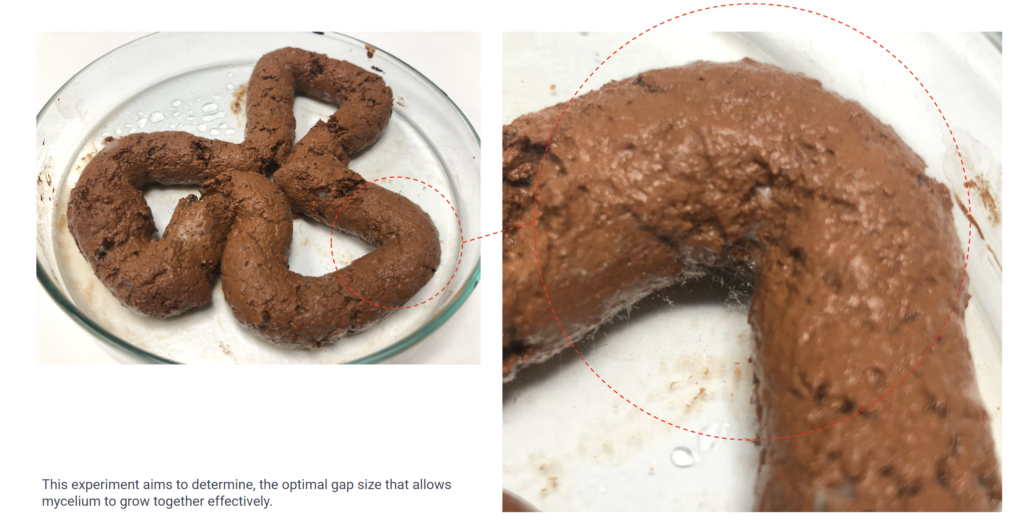
SPEED TESTING – clay+sawdust+mycelium
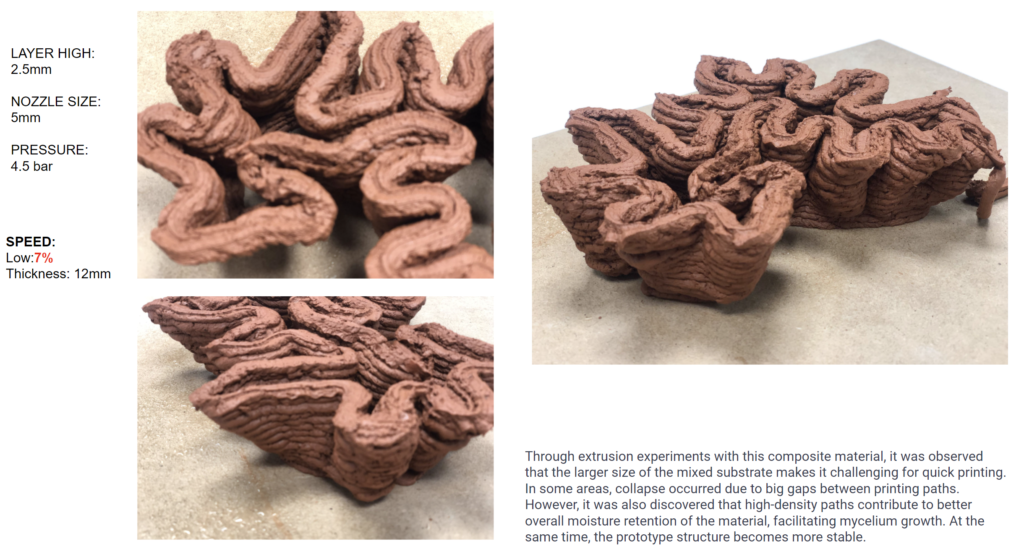
MATERIAL RESEARCH
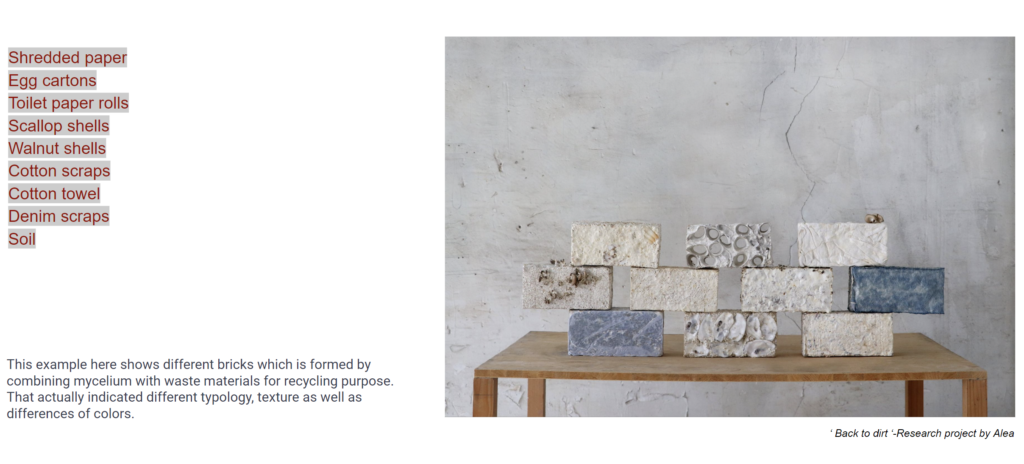

MATERIAL TEST
